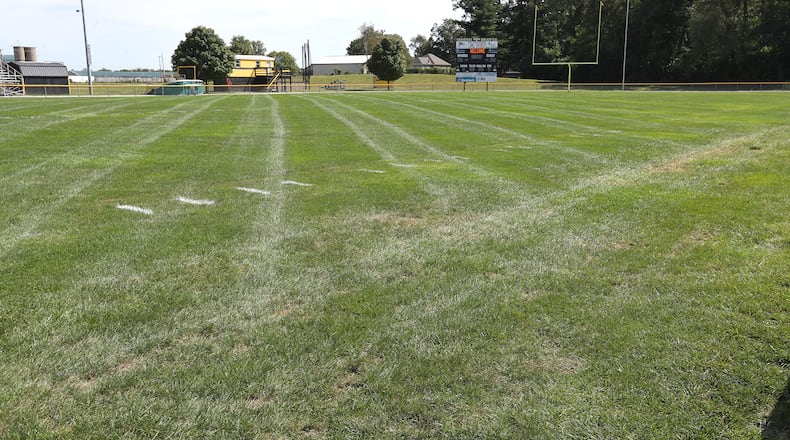Superintendent Brian Kuhn said they discovered the damage on Aug. 24.
“Our lawn care vendor came out on Aug. 25, confirmed the presence of armyworms, and treated that day. The treatment was successful as there is no evidence of any additional brown spots. However, the lawn care vendor recommends we stay off the field for a few weeks to allow the impacted areas to heal and recover,” Kuhn said.
Credit: DaytonDailyNews
Fall armyworms, which are actually caterpillars, return every few years to feast on local lawns, the last time being 2015, according to Pamela Corle-Bennett, state master gardener volunteer coordinator and horticulture educator for Ohio State University Extension.
She said there tends to be common armyworms in Ohio each year in late summer and early fall, and they are typically a problem in new wheat fields, pastures and on golf courses.
The damage on Clark-Shawnee’s field caused Friday’s varsity football game against Carroll to be played on Carroll High School’s field.
Kuhn said the school expects games to resume at Clark-Shawnee with the next home game scheduled for Sept. 17.
Fall armyworms originate in South America and are found commonly in Southern states, Corle-Bennett said. Entomologists suggest the pests found their way to the area via recent storms.
“When they drop to the ground they look for places around turf grass to lay their eggs,” she said. “If it were brand new seeding of lawn, that’s perfect (for them).”
Corle-Bennett said armyworms lay their eggs in masses, so when they hatch, numerous caterpillars emerge all at once. The worms, which have been around the past three to four weeks, have gone unnoticed until the last week or so.
She said the easiest way to check if a lawn has armyworms is to take a gallon of water and mix in a tablespoon of dish soap, then pour it on brown spots on the lawn. If the worms are there, the soapy mixture will cause them to come to the surface.
The worms can be eliminated with pesticide sprays that have lawns listed on the label and contain list bifenthrin, beta-cyfluthrin, lambda or gamma-cyhalothrin, permethrin, deltamethrin or other pyrethroids as ingredients, Corle-Bennett said.
Fall armyworms don’t kill a lawn as they don’t eat the crowns of turf plants, she said. “However, exposure to hot sun and drying winds will finish the lawn off,” Corle-Bennett said. “Keep the crowns consistently moist and they will begin to grow. Thankfully the weather has cooled a bit as this helps recovery.”


